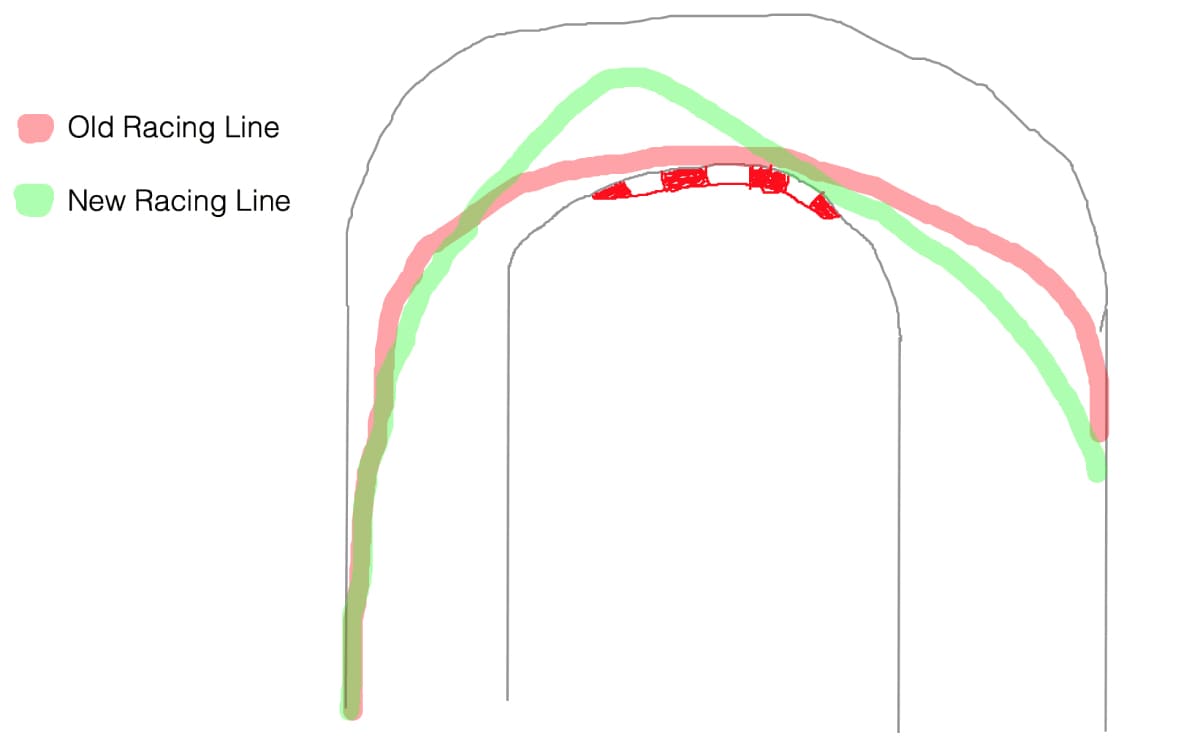Our race car coaches at Blayze have consistently seen drivers at Watkins Glen International driving what we call the “old racing line.” The repave at Watkins Glen that happened a few years ago drastically changed not only the level of grip at this race track, but also some of the racing lines. So, have you adapted?
Today we will be breaking down the racing line at the toe of the boot. It is fascinating that with perfect accuracy we can tell if race car drivers learned this track before the repave, or have an instructor that teaches the lines that used to be the quick line. Before the repave there was a large section that was concrete, the concrete had less grip. This made the racing line have a tighter entry and an earlier apex.
Now that the big concrete block is gone, drivers can really charge the entry of the corner much more aggressively. Below is an actual segment one of our pro racing coaches, Dion von Moltke, was recording for a Blayze driver.
Using the old racing line causes a few issues:
- To keep the car in tight and hit an earlier apex we have to over slow the car. The racing line we will cover in this article allows for a driver to bring in more entry speed.
- The early apex changes the angle of the car at the new apex spot. This makes a driver have the need for more steering angle mid-corner to exit. That additional steering input with throttle will create understeer that can lead to a snap oversteer on exit.
- This compromises our exit speed onto the small straight after this corner.
The New Racing Line
Now that the corner has tons of grip everywhere, we don’t need that early entry and apex point. This allows us to challenge the braking zone quite a lot more. We now like to treat this corner somewhat like a rounded diamond. We like to teach it now in the following way:
- A deep brake with a small steering input - essentially aiming the car for the middle of the road in the middle of the corner. Having less steering input will put less load in the car and allow drivers to improve their entry speed.
- The brake zone here should be a quick and hard hit to get to threshold braking quickly. Since we have only a small input change on initial turn in, we can continue to have a quite heavy brake application past turn in.
- We like to think about essentially braking past the apex towards the middle of the car, and then getting the car to rotate mid-corner on the brakes to head towards a now later apex.
- The later apex gives us now an angle of the car that is pointed more down the road on exit, rather than having a race car pointed towards the outside of the track. We also want to make sure drivers delay initial throttle application until they get to the apex. This allows drivers to get back to full throttle earlier, which combined with the better car angle provides a much stronger apex.
Overall if these steps are done right drivers will now have a later brake zone, more entry speed, less minimum speed mid-corner, and a better exit.
It’s a critical corner to get right at the Watkins Glen International race track and after the repave the lines have changed the majority of their corners. We hope this helps you master the toe of the boot and if you are looking for ways to learn how to master the rest of 10 corners we hope you will consider Blayze’s online but personal video coaching services!
Below is a visual of the old racing line and what we want the new racing line to look like.


